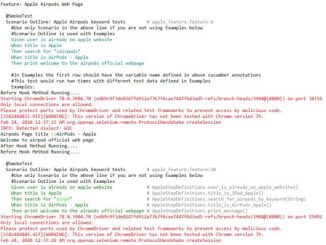Tutorials and resources on how to apply test automation in software testing
Every test suite has them: a few tests that usually pass but sometimes mysteriously fail when run on the same code. Since they can’t be reliably replicated, they can be difficult to fix. The good news for software testing is that there is a set of usual suspects that cause these issues: test order, async code, time, sorting and randomness.
Since the start of software development, we have always had to test our software. And over the course of several decades, the discipline of software testing has seen many best practices and patterns developed. Unfortunately however, not all practices have been good and there are also anti-patterns in software testing.
Both Selenium and Cucumber are popular open source test automation frameworks. In this article, Jessica Cyrus explains how to integrate Cucumber and Selenium WebDriver which allows defining automated tests in a language that could be easier to understand outside the software testing team.
The mobile scene is growing faster than ever. Applying software testing practices to the diversity and the complexity of the mobile ecosystem is not easy. In this article, Luz Parra presents some good practices to achieve a solid mobile testing.
Learn in this presentation how a Chicago finance company avoided a radical shift and took a more evolutionary approach to its DevOps transformation. Kevin Harriss shares the lessons that this organization learned along the way to hopefully ease your own DevOps transformation.
We all know that test automation is a must if you hope to perform software testing on a large e-commerce project. However, there is more than one way to write tests for your software, and each has its own pros and cons.
Artificial Intelligence (AI) and Machine Learning technologies are slowly finding a place in many aspects of digital organizations. In this article, Stella Murugesan explains to us what their impact on software testing could be. Automatic test cases creation anyone?







